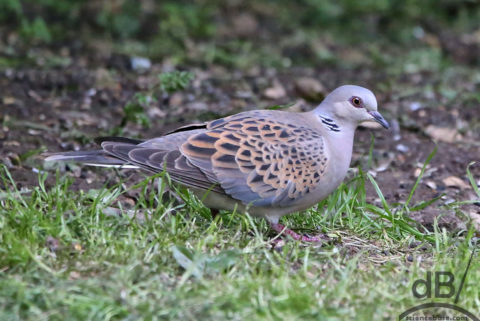UPDATE: The purring call of the male Turtle Dove was in halcyon days of yore very much the sound of the English summer, long before the Collared Dove arrived on these shores around the time of World War II.

It was with great pleasure that summer of 2018, we’ve been places where we’ve heard several. Dog walking in Rampton, Cottenham (South Cambs), and camping in Snettisham (North Norfolk). There were at least three not far from where we pitched our tent.

I should perhaps have saved this bird for the Christmas edition given its pride of place in the “The Twelve Days of Christmas” the familiar gift accumulation song of 1780, thought to be French in origin that has the generous benefactor donating “two turtle doves” to their true love along with various leaping lords, pipers, milkmaids, drummers and of course a partridge in a pear tree.
I’m afraid I’ve only got one turtle dove (Streptopelia turtur) to give you anyway. This specimen had turned up on the day we visited RSPB Bempton Cliffs in June 2017 to see the puffins, gannets, guillemots, razorbills and others that live on the cliffs there. It was ground feeding among the jackdaws, chestnut-capped tree sparrows (Passer montanus), the more familiar, yet not native, collared doves, a pair of greenfinches (Chloris chloris), and a large brown rat (Rattus norvegicus) at the feeding stations close to the visitor centre.

The name of this bird comes from the Old English turtle, from the Latin turtur which is onomatopoeic given the bird’s purring call, trrr-trrr-trrrrr (as opposed to the more staccato coo-coo-coooh of the collared dove). The RSPB describes the turtle dove’s call as a “gentle purr…an evocative sound of summer”. However, it is not so often heard these days because of declining numbers, due to more efficient farming practices and a lack of wildflower seed and grain during its breeding season, habitat loss both here and in its wintering grounds. There’s also the issue of their being hunted in their millions on passage across Europe.
As such, the species is on the Red List of conservation concern. The RSPB offers farmers advice on encouraging this rare species here.